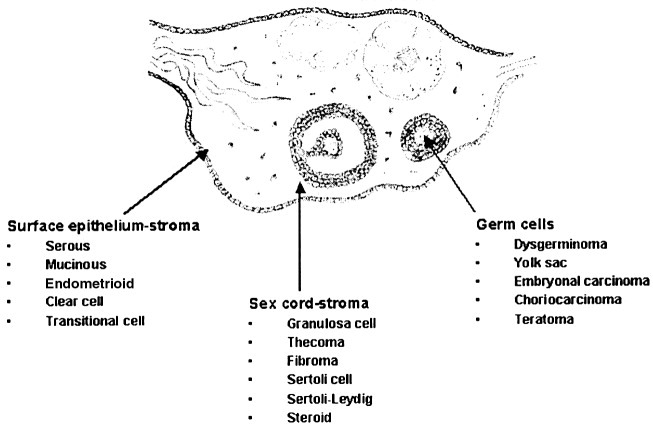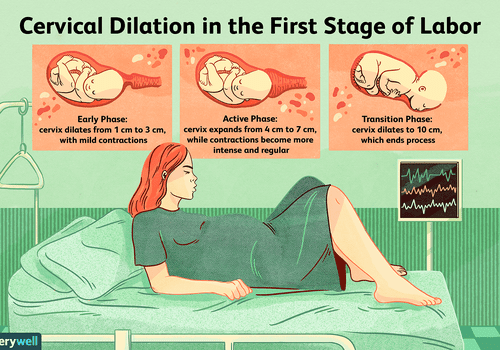Memory Aid for NEET PG: Obstetrics and Gynecology Mnemonics

The human brain is a miraculous thing. We all have to agree on that. The people in the medicine line are the universal masters of this miracle. We, medical students, not only aim to conquer all the complexities and ailments around the human body but also surmount the biggest challenges posed to humans, that is remembering huge chunks of information and invoking the same under the most stressful circumstances.
Whichever medical exam you’re attempting, NEET-PG, MBBS exams, or interning at a hospital, learning and putting the knowledge to the test remains constant. Thus, remembering such a massive volume of information requires the help of some of the other memory aids. Out of all the branches, obstetrics and gynecology mnemonics can be the most useful NEET PG memory aid as the branch requires one of the most sensitive and complex courses of treatments.
About Mnemonics for Obstetrics and Gynecology: Why Do We Need Them?
We all remember how difficult it was to remember the periodic table during our school years. How did we learn it then? With the help of catchy mnemonics. The mnemonics are memory aids that are used to remember a long list or a large chunk of information through the means of short phrases, poetries, songs, short forms, pictures, or a storyline. These mnemonics are a blessing in disguise for any medical aspirant or practitioner.
We need to remember multiple treatments for a variety of ailments and to execute them impeccably, we need to remember long lists of steps involved in the treatment of each complication. That’s where mnemonics come to our rescue.
These mnemonics allow us to recall and execute each treatment with ease during an examination or while administering the treatment practically. Thus, we are here to tell you some famous and super useful and important mnemonics for obstetrics and gynecology through this article.
Common Obstetrics and Gynaecology in Mnemonics
Now that we have discussed what mnemonics are and why mnemonics in obstetrics and gynecology are important for your success in examinations. While there are many mnemonics, we have compiled a list of the most common and important mnemonics for obstetrics and gynecology in this article so you do not have to refer to multiple sources to get just that one mnemonic.
Classification of Ovarian Tumour

My Sister Began Experiencing Cancer, Doctor Examined The Cancer, She Felt Good
- Surface Epithelial
My Sister Began Experiencing Cancer
- Mucinous
- Serous
- Brunner
- Endometrioid
- Clear cell
- Germ cell
Doctor Examined The Cancer
- Dysgerminoma
- Endometrial Sinus
- Teratoma
- Choriocarcinoma
- Sex chord stromal
She Felt Good
- Sertoli Leydig cell
- Fibroma
- Granulosa theca cell
Risk Factors of Endometrial Carcinoma
ENDOMENT
- Estrogen (unopposed or high level)
- Nulliparity, low parity
- Diabetes mellitus
- Obesity, PCOD (polycystic ovarian disease)
- Menopause late
- Early menarche
- Tamoxifen, tumor (ovarian, breast, anorectal)
Adverse effects of OC Pills
MALA N Is OCP
- Metabolic disorders, Migraine
- Acne, Hirsutism
- Liver disease
- Abnormal bleeding
- Nausea, vomiting
- Obesity (weight gain)
- Carcinogenesis, Cardiac diseases
- Pregnancy (failure of OCP)
Higher Level of 𝛃 HCG
MR DCH
- Multiple pregnancies
- Rh isoimmunization
- Down syndrome
- Choriocarcinoma
- Hydatidiform mole
Increased Level of Alpha FetoProtein
Maternal Serum Alpha-Fetoprotein
- Multiple gestations, Misdiagnosis
- Spina bifida
- Anencephaly, Abdominal wall defect
- Fetal death
- Placental abruption
Causes of Recurrent Miscarriages
RIBCAGE
- Radiation
- Immune reaction
- Bacteria (infections)
- Cervical incompetence
- Anatomical anomaly
- Genetic
- Endocrine
Beneficial Effects of OC Pills
EPIC
- Endometriosis\adenomyosis
- Ectopic pregnancy
- PID (Pelvic Inflammatory Disease)
- PCOD (Polycystic Ovarian Disease)
- Iron deficiency anemia
- Irregular bleeding
- Cancer endometrium
- Cancer ovary
Stages of Embryonic Development
Zikes! Martin Is A Big Giant Nerd!
- Zygote
- Morula
- Blastula
- Gastrula
- Neurla
Postpartum examination simplified checklist
BUBBLES
- Breast
- Uterus
- Bowel
- Bladder
- Lochia
- Episiotomy
- Surgical site (for Cesarean section)
Oral contraceptives: side effects
CONTRACEPTIVES
- Cholestatic jaundice
- Oedema (corneal)
- Nasal congestion
- Thyroid dysfunction
- Raised BP
- Acne/ Alopecia/ Anaemia
- Cerebrovascular disease
- Elevated blood sugar
- Porphyria/ Pigmentation/ Pancreatitis
- Thromboembolism
- Intracranial hypertension
- Vomiting (progesterone only)
- Erythema nodosum/ Extrapyramidal effects
- Sensitivity to light
Multiple Pregnancy Complications
HI, PAPA
- Hydramnios (Poly)
- IUGR
- Preterm labor
- Antepartum hemorrhage
- Pre-eclampsia
- Abortion
Postpartum collapse: causes
HEPARINS
- Hemorrhage
- Eclampsia
- Pulmonary embolism
- Amniotic fluid embolism
- Regional anesthetic complications
- Infarction (MI)
- Neurogenic shock
- Septic shock
Cardinal Movements of the Fetus
Don’t Forget I Enjoy Really Expensive Equipment
- Descent
- Flexion
- Internal rotation
- Extension
- Restitution
- External rotation
- Expulsion
Preeclampsia: Classic Triad
PREeclampsia
- Proteinuria
- Rising blood pressure
- Edema
Indications For Delivery
FORCEPS
- Foetus alive
- Os dilated
- Ruptured membrane
- Cervix is taken up
- Engagement of head
- Presentation suitable
- Sagittal suture in AP diameter of the inlet
Abdominal pain: Causes During Pregnancy
LARA CROFT
- Labour
- Abruption of placenta
- Rupture (eg. ectopic/ uterus)
- Abortion
- Cholestasis
- Rectus sheath haematoma
- Ovarian tumour
- Fibroids
- Torsion of uterus
Pelvic Inflammatory Disease (PID): causes, effects
PID CAN be EPIC
- Causes
- Chlamydia trachomatis
- Actinomycetes
- Neisseria gonorrhoeae
- Effects
- Ectopic
- Pregnancy
- Infertility
- Chronic pain
Delivery: Instrumental Delivery Prerequisites
AABBCCDDEE
- Analgesia
- Antisepsis
- Bowel empty
- Bladder empty
- Cephalic presentation
- Consent
- Dilated cervix
- Disproportion (no CPD)
- Engaged
- Episiotomy
Labour: preterm labor causes
DISEASE
- Dehydration
- Infection
- Sex
- Exercise (strenuous)
- Activities
- Stress
- Environmental factor (job, etc)
Sexual Response Cycle
EXPLORE
- EXcitement
- PLateau
- Orgasmic
- REsolution
Ovarian cancer: risk factors
Blue FILM
- Breast cancer
- Family history
- Infertility
- Low parity
- Mump
Post-partum hemorrhage (PPH): causes
4 ‘T’s
- Tissue (retained placenta)
- Tone (uterine atony)
- Trauma (traumatic delivery, episiotomy)
- Thrombin (coagulation disorders, DIC)
Early Cord Clamping: Indications
RAPID CS
- Rh incompatibility
- Asphyxia
- Premature delivery
- Infections
- Diabetic mother
- CS (cesarean section) previously
Oral Contraceptive Complications: Warning Signs
ACHES
- Abdominal pain
- Chest pain
- Headache (severe)
- Eye (blurred vision)
- Sharp leg pain
Asherman Syndrome Features
ASHERMAN
- Acquired Anomaly
- Secondary to Surgery
- Hysterosalpingography confirms diagnosis
- Endometrial damage/ Eugonadotropic
- Repeated uterine trauma
- Missed Menses
- Adhesions
- Normal estrogen and progesterone
Pelvic Inflammatory Disease (PID): Complications
I FACE PID
- Infertility
- Fitz-Hugh-Curtis syndrome
- Abscesses
- Chronic pelvic pain
- Ectopic pregnancy
- Peritonitis
- Intestinal obstruction
- Disseminated: sepsis, endocarditis, arthritis, meningitis
Secondary Amenorrhea: Causes
SOAP
- Stress
- OCP
- Anorexia
- Pregnancy
Dysfunctional Uterine Bleeding (DUB): 3 Major Causes
DUB
- Don’t ovulate (anovulation: 90% of cases)
- Unusual corpus luteum activity (prolonged or insufficient)
- Birth control pills (since it leads to an increase in progesterone-estrogen ratio)
Postpartum Hemorrhage Risk Factors
PARTUM
- Prolonged labour/Polyhydramnios/Previous C-section
- APH
- Recent Hx of bleeding
- Twins
- Uterine fibroids
- Multiparity
1st Stage of Labor Prerequisites

FRAMED
- Fluids
- Rest
- Analgesia Epidural
- Monitoring, Foetal Maternal
- Examination (vaginal or internal)
- Doctor
These just form a drop in the ocean of mnemonics in gynecology and obstetrics for medical students. There are so many more to discover in various disciplines and various topics. So fasten your seatbelts tight.
How to Form Your Mnemonics For Obstetrics and Gynecology
While Numerous common mnemonics are world-renowned and might be the common language that medical people speak, you need not follow them blindly. Mnemonics are memory aids meant for helping you remember things faster, better, and more precisely.
They should be as comfortable and easy to remember as they can be. In case the existing mnemonics don’t feel like home to you, you can always create new, creative ones that fit your feet.
Just get your creative juices flowing. Use related words, incidents, structures, or names that fit the treatment or process list right.
- You can start with picking the first letter from each step and weave a catchy word or form a catchy story using phrases starting with that letter.
- Make puns or memes around it if you prefer humor and fun. That’s something you’ll never forget.
- Just draw around it. The images shouldn’t have to be the incarnation of Picasso. They just need to make sense to you and remind you what the process appears like.
- Recite the treatment in the form of a rhythm, or try setting it in the tune of a song you love if you are unable to use the aforementioned ways. This one’s easy yet purposeful.
- If nothing seems to work out, use Google for research. You can find various mnemonics in obstetrics and gynecology PDF files for free downloads available online. There are numerous medical mnemonics e-book PDF files available too. Only reading them can help you create your own, unique mnemonics.
These custom mnemonics would help you remember things easily as they are your creations and this fact is going to stay in your mind, if not anything else. You should have fun creating your unique mnemonics. They need not fit any rule as long as they are fulfilling their purpose of existence.
Conclusion
Mnemonics for obstetrics and gynecology help medical students tremendously when it comes to keeping all those treatments rulebooks handy. These mnemonics just make the student’s life so much easier. You can form or learn mnemonics for any field in medicine. Just relax, have fun and sing along!
There are just so many things to learn and recall, but with correct guidance and support along with accurate knowledge in one place acts like a ready to refer mnemonic itself. On E- Gurukul app, find everything that a medical aspirant can need together, on one platform. Download the app now and discover it yourself!


